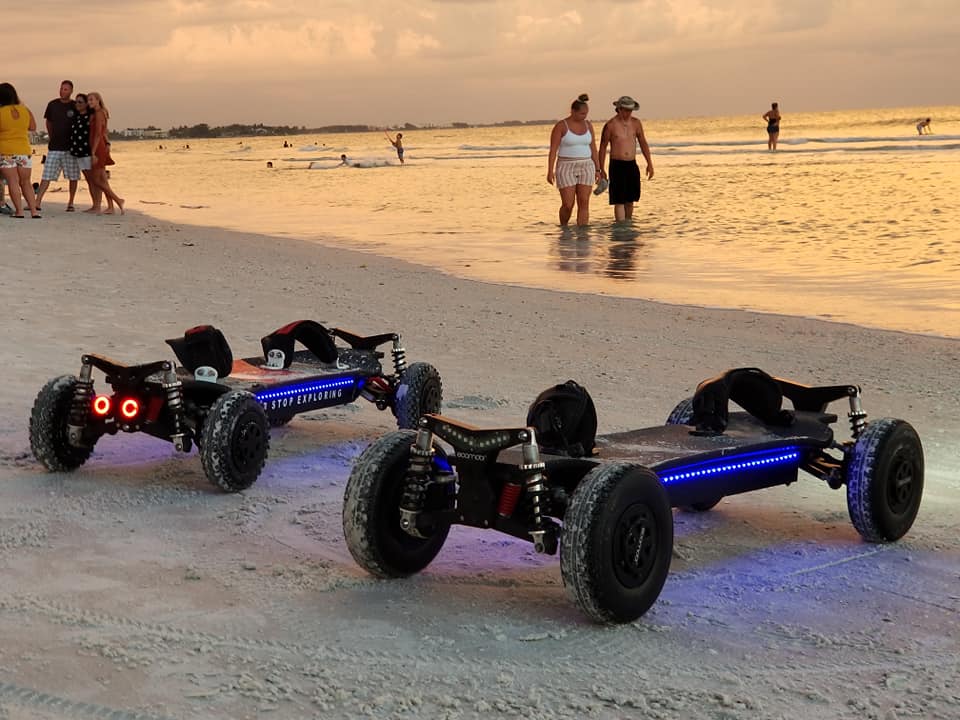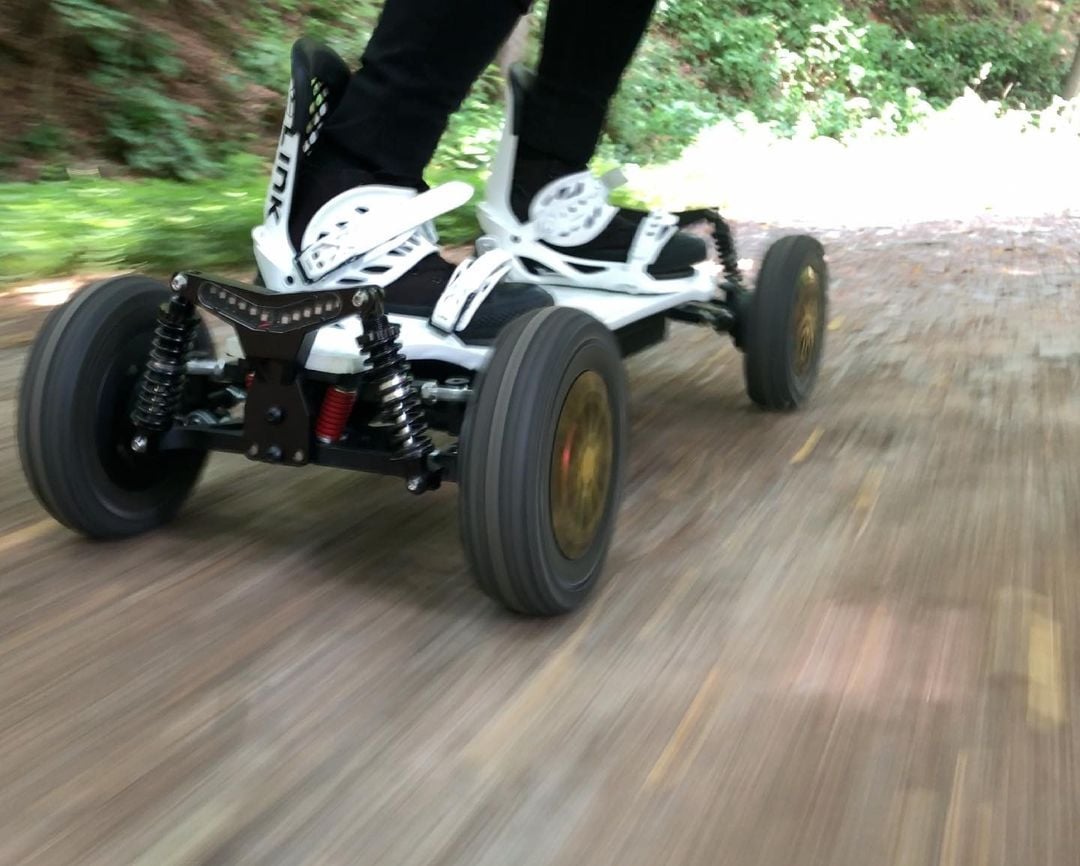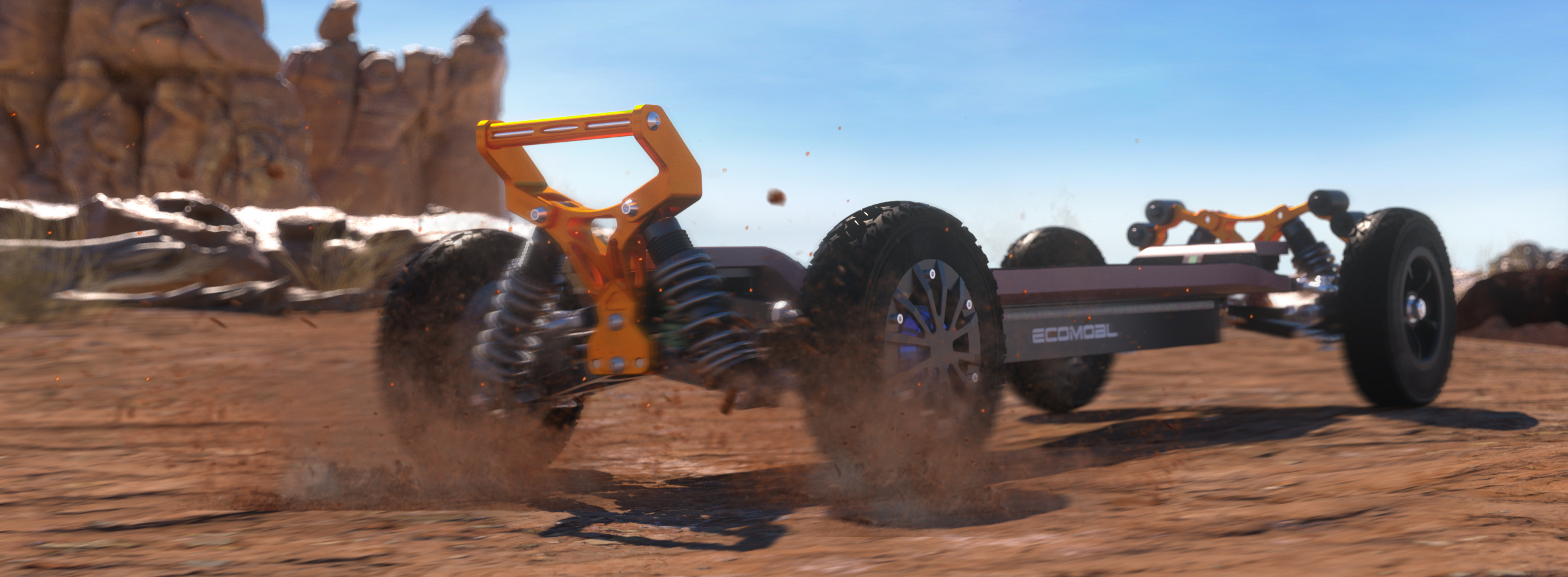Cracked trails, grassy slopes, and forest paths demand more than your average city cruiser. For those who crave the power to go beyond paved streets, an off-road electric skateboard offers a rugged ticket to adventure. But not all off-road e-boards are created equal. This guide walks you through every major factor so you can confidently pick the best off-road electric skateboard for your terrain and riding style.
What Is an Off-Road Electric Longboard?
Think of an off-road electric skateboard as a specialized beast—built not for smooth sidewalks but for wild, unpredictable surfaces. Often called all terrain electric skateboards, these machines come equipped with larger wheels, robust suspension systems, and stronger motors. Unlike typical e-skateboards, they don’t struggle with gravel paths or root-covered trails. They’re designed to power through.
You’ll typically see features like:
- Oversized pneumatic or honeycomb wheels
- High-torque dual motors (or even four-wheel drives)
- Spring or hydraulic suspension systems
- Durable, wide decks for better stability
Whether you’re riding on loose dirt, sand, grass, or rocky terrain, off-road longboards absorb shock and maintain traction to give you a smoother ride across uneven surfaces.
Off-Road Electric Longboards vs. Regular Electric Skateboards: What Sets Them Apart?
Now that you know what an off-road electric skateboard is, the next logical question is—how does it really differ from a regular e-board? While they might look similar from a distance, the core design and ride quality are worlds apart.
| Feature | Off-Road Electric Longboard | Regular Electric Skateboard |
| Motor Power | Dual or quad motors (6000W–12000W total | Single or dual motors (800W–1500W total) |
| Suspension | Spring or hydraulic suspension | Usually none |
| Tires | 7-10″ pneumatic or Non-pneumatic tires | PU street wheels, smooth surface |
| Deck Material | Composite (maple + fiberglass/carbon) | Basic wood or lightweight composite |
| Weight | 20+ kg | 7–10 kg |
| Terrain | Dirt, gravel, grass, trails | Asphalt, concrete, flat roads |
| Control System | Advanced ESC, terrain modes, torque control,baking system | Basic ESC, limited modes |
| Ride Experience | Stable, powerful, shock-absorbing | Agile, light, ideal for commuting |
1. Motor Power & Drive System
Single-drive motors of power ranging from 800W to 1200W are utilized by most regular e-boards. Off-road boards utilize two motors or even more, with power ranging from 1500W to 3000W. The configuration is designed for greater torque, which assists in climbing gradients and pushing through resistance along uneven routes.
2. Suspension & Shock Absorption
Regular electric skateboards rarely come with dedicated suspension. You’ll feel every crack on the pavement. Off-road models, however, feature built-in suspension systems—spring-based or hydraulic—that absorb impacts from bumps, rocks, and dips in the ground, keeping your ride smooth and controllable.
3. Tires & Traction
City boards feature solid PU wheels made for hard surfaces. Off-road models feature pneumatic or anti-puncture tires with deep tread patterns. Such tires provide better grip and stability on mud, gravel, sand, or grass.
4. Deck Design
Off-road boards feature longer, wider decks made of composite material consisting of layers like maple and fiberglass or carbon fiber. It offers shock resistance and stability to the rider. City boards are thin and flexible to facilitate easier maneuverability.
5. Weight & Portability
Due to their constructed design and larger batteries, off-road electric skateboards weigh 15–20kg or more. They are meant to be ridden, not carried. Standard e-boards are lighter and more portable—typically less than 10kg.
6. Control System
Off-road e-boards often have more advanced ESCs (electronic speed controllers) with adjustable acceleration curves, braking strength, and terrain modes. City e-boards are more basic.
Cumulatively, these differences mean that while regular e-skateboards are perfect for flat city terrain, off-road electric skateboards are your go-anywhere ride.

Are You Suitable for the Off-Road Electric Longboard?
Off-road electric skateboards may sound exciting and powerful—but are they for your riding experience? Ask yourself these questions to decide:
You ride on unpaved or terrain?
If your typical routes involve dirt, gravel, grass, or forest paths, a standard electric skateboard will not do. An off-road one is designed to deal with tough conditions and keep its grip where others will lose it.
You value adventure over portability?
Off-road longboards weigh more and are heavier. They are not built for a speedy metro trip or an easy haul up stairs. If you want a forest path over a maze of office complexes, that weight is a tolerable trade-off.
Do you have the skill to handle intense acceleration and braking?
Off-road electric skateboards can feature double high-torque motors. The braking and ride can be aggressive. New riders can take a while to learn.
Are you ready to take care of your board?
These boards feature advanced components—suspension systems, belt-driven motors, pneumatic tires. They’re not maintenance-free. Take some time to learn some basic maintenance and you’ll extend its life and performance.
Your budget includes a high-end board?
Off-road electric skateboards are typically more expensive than city models. Their cost conveys their more robust components, more complex systems, and greater durability.
If you’ve said yes to most of these questions, then you’re a good match for cruising off-road electric longboard—and enjoying every bump and twist on the trail.
Key Factors for Choosing Your Off-Road Electric Longboard
After you’ve ensured that you’re in the correct category, now it’s time to choose the best off-road electric skateboard that meets your requirement. Have a good look at these essential specs:
Battery Capacity & Range
For path thrusters, battery life may be the deciding factor between getting home or hiking back carrying a dead board. A minimum of a 36V lithium battery and a 15Ah+ capacity will typically yield 25–35 km range per charge. More expensive models offer 20Ah+ batteries, and range is extended to 40–50 km. Fast charging (2–3 hours) is an advantage for heavy use riders.
Motor Configuration
Dual-motor configurations rule the off-road market. Seek configurations with total output in the 3000W to 6000W range. A solo 1500W motor can handle city grades, but dirt roads or hills require two motors with at least 2000W each. Greater torque provides better traction in low-traction situations.
Tire Type & Size
Pneumatic 7-10-inch air-filled tires are standard. The 7-inch tire provides a responsive, playful ride, and 10 inch models provide better shock absorption on rocks and potholes. Tread design also has significance: knobby texture or V-groove treads provide more traction in loose or wet conditions. Honeycomb tires conserve maintenance and risk of punctures but reduce shock damping slightly.
Suspension System
If you’re gliding along rocky fire roads or forest trails, spring or hydraulic suspensions are required. Coil-spring suspensions are popular and serve well for average terrain. For steep downhill rides and continuous vibration damping, some top-of-the-line boards have oil-damped shocks—ideal for aggressive riders who desire control and comfort.
Deck Build
Flex and durability should be balanced. Choose multilayer maple decks reinforced with fiberglass or carbon fiber. Carbon decks are stiffer, more lightweight, and provide more energy transfer but less flex. A 9–11 inch width offers more foot stability, especially when going higher speeds or over bumpy terrain.
Maintainability
Look for tool-free or simple-access battery compartments. Manufacturers offering replacement belts, tires, ESCs, and motors directly from their website rank high in long-term usability. Modular construction (removable wheels, motor guards, or interchangeability of drive systems) simplifies repairs and upgrades too.

Final Thoughts
You now have the full picture. The best off-road electric skateboards are not just machines—they are the extension of your riding ambition. It’s made for those who don’t settle for sidewalks and who see every dirt trail as an invitation. Whether you’re seeking adrenaline or freedom, the right board is out there. All you need is the right terrain to unleash it.





